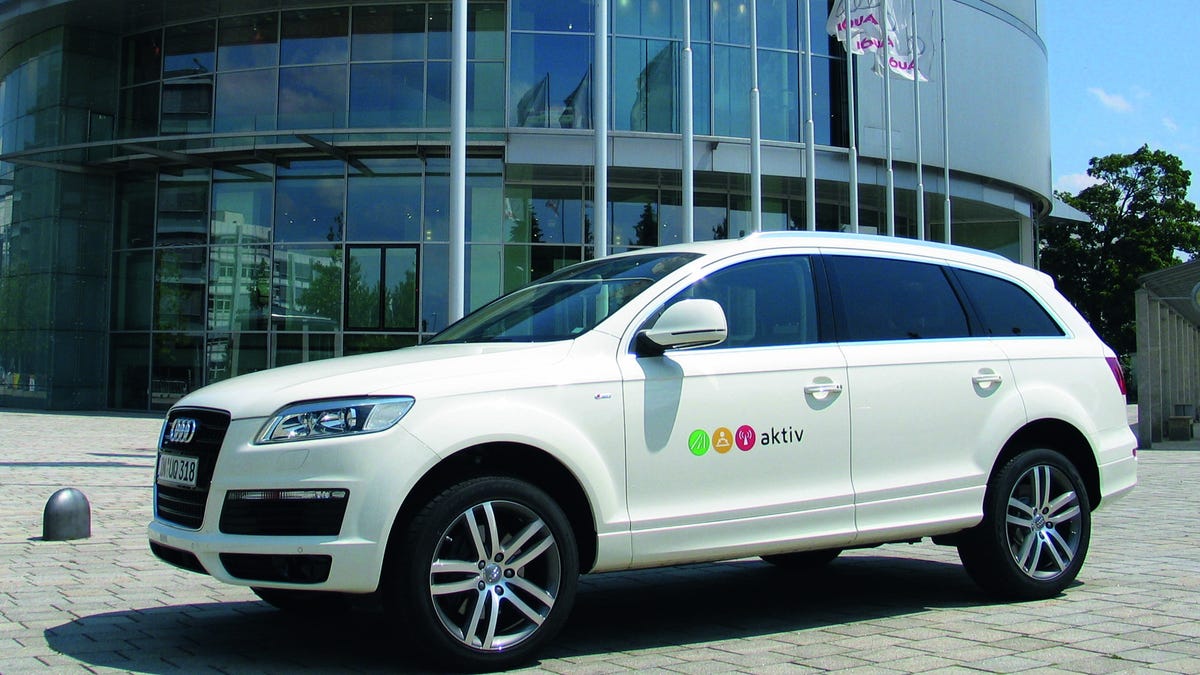Audi next-gen vehicles will be watching you
Audi is the latest manufacturer to test active braking technology for pedestrian safety.

Audi equipped a test vehicle with forward-looking, 3D-imaging sensors, a processing unit that identifies traffic situations, and affixed internal cameras that keep an eye on the driver in an effort to develop next-generation active pedestrian and cyclists safety and crash-avoidance technology.
As part of the German Adaptive and Cooperative Technologies for Intelligent Traffic (AKTIV) consortium, Audi is participating in a three-pronged program consisting of Safety for Pedestrians and Cyclists, Active Emergency Braking, and Driving Safety and Attentiveness, which aims to use advanced automotive technology and communication to reduce traffic accidents.
On the road, 3D sensors on the Audi's test vehicle scan traffic for potential accident scenarios. Based on Audi researcher's classification system of the scenarios and related injury severity, the vehicle can implement a "concept of action for braking and steering," according to the manufacturer's press release.
The company is also exploring technology that enables the car to employ active emergency braking even earlier based on driver attentiveness. It uses internal cabin cameras that track the driver's head position to determine if he's paying attention to the road, or perhaps looking down and texting on a mobile phone.
It sounds a lot creepier than it really is. If you're worried about the cameras, it's not so much "Big Brother" as it is backseat driver.
But backseat drivers typically don't have the power to slam on the brakes should they detect that the driver is distracted (the cameras can tell by the position of the driver's head) and grab the wheel to steer the car away from a pedestrian.
Audi's "seeing vehicle," on the other hand, will.
It's similar to safety technology already available on the upcoming Volvo S60. Volvo's S60 is equipped with forward-looking cameras and scans traffic for pedestrian-like forms that are more than 30 inches tall and have a head, torso, and arms. Cameras can track about 50 objects at a time. If a person moves out in traffic and looks like the driver could hit him, the car audibly warns the driver, and if the driver doesn't take action, the pedestrian detection system will begin to brake the vehicle. At speeds less than 9 mph, the car will brake entirely by itself.
One key difference between Volvo's and Audi's technology is that Volvo looks at driver behavior, not driver's position. Volvo's active-braking system looks for cues that the driver is paying attention, such as actively steering the vehicle.
Audi's system uses internal cameras that record the position of the head and the orientation of the driver's head to deduce the attentiveness of the driver. If it detects that the driver isn't paying attention, it could begin the warning and braking sequence earlier than waiting until the last minute to avoid a crash.
Either way, both systems are a boon for pedestrians and cyclists on the road, and if it prevents an accident, it's a win for everyone.

